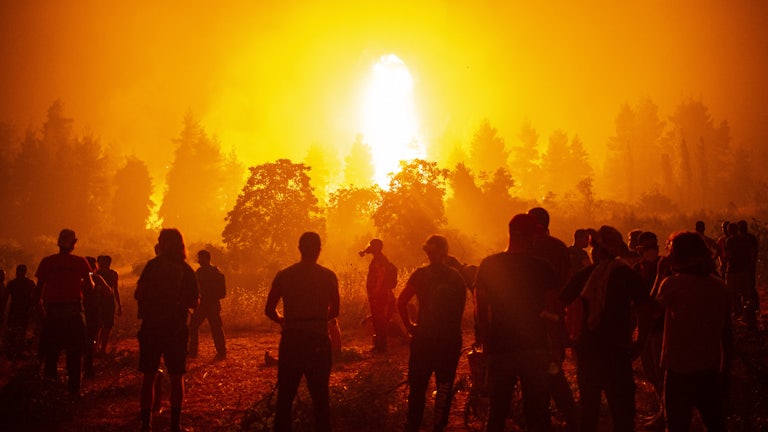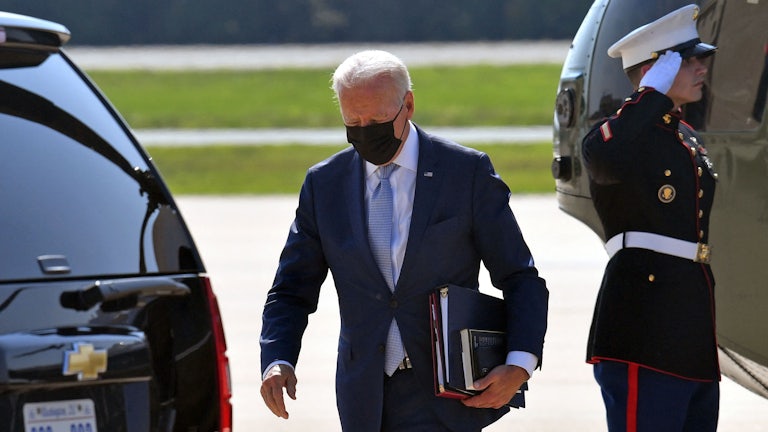Climate change first slapped Nikki Carson in the face in 2017. Or that’s how the 44-year-old Washingtonian describes the abrupt end to her multi-day backpacking trip that August. One morning, Carson and her husband woke up to a glowing red sun and something unfamiliar falling from the trees. “I think that’s ash,” she remembers them saying. “And then we got into this conversation of, how far can ash travel on air?” The answer, the couple reasoned, was not far enough for comfort.
Carson soon learned they had ended up less than 40 miles from the Norse Peak Fire, which formed when flames ignited by lightning and fed by hemlocks and firs converged northeast of Mount Rainier National Park. The conflagration ultimately scorched 55,000-odd acres of Washington State forest. When the forest service closed that stretch of the Pacific Crest Trail, everyone had to turn around or find another way out. “It was unusual then,” Carson told me, “but I hear stories like that all the time now.”
Harsh climates have always put nature-lovers to the test. And an unprepared hiker could make a mess in even the most mild conditions. But climate change is now challenging the expectations of even experienced recreationists and athletes, who are increasingly finding the places they know and love made strange—and even dangerous—by extreme temperatures, sudden shifts in weather, wildfires, human-animal encounters, and more. It will continue to do so, as additional emissions and continued global warming throw weather patterns further out of whack.
“People get hurt, people get lost, people go missing every year,” Carson, who has more than a decade of experience backpacking, said. But the headlines can still stun, from the death of Philip Kreycik, an avid Bay Area trail runner, who appears to have succumbed to heat stroke in July, to the as-yet-unsolved deaths of a family and their dog in Mariposa County, California, in August.
“People are definitely aware that this is different and that this is very severe,” Carson added. “It doesn’t just feel like a bad cycle, it feels much larger than that.”
The specter of climate change has, ironically, motivated many to see the wonders of the natural world while they feel they still have the chance. But their activity comes at a time when such environments are at their most precarious. For example, the increase in last-chance “glacier tourism” has, at least anecdotally, led to a related uptick in accidents and deaths, including cases where people have been hit by falling rocks or ice or fallen into widening crevasses. Such incidents are “cruel reminders of all the smaller-scale and sometimes unpredictable damages climate change can inflict—even in the places where its broadest impacts are most visible,” Alaska-based writer Elizabeth Earl wrote in The Atlantic in 2018.
The Covid-19 pandemic only accelerated this trend, as record numbers of Americans have streamed into local and national parks, seeking opportunities to hike, birdwatch, and just sit under trees. With risk of transmission higher indoors, getting outside “seemed much more safe than any other activity you can do,” said Gary Weiss, president of the San Francisco Hiking Club, which organizes hikes for gay, lesbian, bisexual, transgender people and their friends of all skill levels. In one of Weiss’s favorite spots, “what used to be weekdays are now like weekends, and weekends are now like holidays, and holidays—don’t bother coming,” he told me.
Risk is inherent in outdoor activities—in fact, it’s often part of the appeal. If you push yourself to climb a higher peak, or go a farther distance, or do it all in a faster time, you grow as a person—or at least that’s the promise. Such “phenomenological gestalts,” as one 2018 research paper on the psychology of ultra-trail running put it, can lead to feelings of endurance and freedom and help people make meaning in the world.
In pursuit of this experience, things will inevitably go wrong, Carson told me, and it’s never the thing you prepared for. In the backpacking community, people joke that “you pack your fears.” If you worry you’ll be thirsty, you’ll weigh yourself down with water; if you obsess over hunger, you’ll bring too much food. Experience helps people determine what amount of preparation is necessary, and what’s overkill.
But on a rapidly-changing planet, experience can be deceiving. June 2021 was the hottest June in 127 years of record-keeping. It outpaced the previous peak of June 2016 by 0.9 degrees. When he disappeared in July, Kreycik, the Bay Area trail runner, was on what should have been a fairly standard trek in Pleasanton Ridge Regional Park. But GPS data from Kreycik’s smart watch, along with insight from his family and friends, suggest he simply wasn’t prepared for that day’s 106 degree high.
In theory, there are ways to manage risks as one’s underlying assumptions about environment become unreliable. Anyone can read up on basic hiking precautions online. Platforms like All Trails are designed to provide users with granular details about the demands of a hike before they go out. Emergency weather radios designed for backpacking can offer vital information about wildfires changing path or picking up speed. And if you’re new to intense outdoor activities, mentors or clubs can be a safe alternative to stepping out for the first time alone, said Alyssa Amos Clark, an ultra runner currently based in California.
In every case, the key is to “challenge yourself, but also [give] yourself bail-out options,” Clark told me. For example, both Clark and Carson have a device called the Garmin inReach, which allows them to share their locations to an appointed friend or family member, send and receive text messages, and even trigger an SOS that connects users with a professional 24/7 search and rescue monitor center. It’s pricey—around $450 for the device, plus a satellite subscription—but it can be a literal lifesaver.
Personal preparedness is not enough, however. People who care about nature—and staying safe in it—have to engage in broader climate action, Clark said. For her part, she has recently switched to a plant-based diet, given meat’s large environmental and emissions impact. She and many other ultra runners are racing closer to home, or paying to offset the carbon from their travels. In the modern era, the camper’s classic ethical imperative to “leave no trace” now includes emissions, too.
- Home
- Content Marketing
- Digital Marketing Strategy
- Landing page
- News
- PPC
- SEO
- Social media
- WordPress web development




